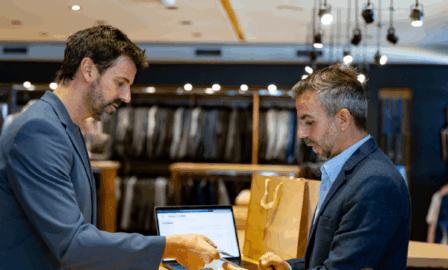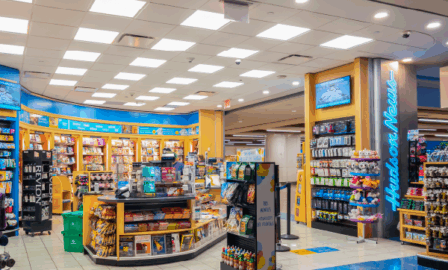2020 Retail Trends
The 2020 retail trends are becoming even more evident during these unprecedented times. As we navigate the start of 2020, the retail industry continues to be dominated by a push towards frictionless, channel-agnostic experiences.
The term “omnichannel” has been fractured and replaced by endless new buzzwords that describe the customer’s desire to have in-store, online, and mobile experiences all work together – each bringing something to the table but in a unified, brand-consistent manner.
What we continue to see though the 2020 retail trends is the ever-growing influence of younger generations, both millennials and Gen-Z, in how retailers and brands go to market. These influences will continue to grow as the purchasing power of these groups evolves and creates a very real incentive to retailers to meet their needs. Lastly, the lasting impact of COVID-19 on retail cannot be overlooked as most retailers have had to shut their doors temporarily and focus solely on their digital channels.
Pushing for Innovation in Convenience
Last year’s holiday season saw a bigger push for convenience for the consumer in their shopping options. Services like buy online, pick up in store (BOPIS) were dubbed the winner of the season with a big uptick in usage, especially for those merchants offering same-day service. Between BOPIS and same-day delivery, Target estimated that these services were up more than 50% from November-December last year.
While obviously important during the craziness that is the holiday season, these same services are going to be vital for retailers who seek to bounce back quickly from the impacts of COVID-19. When the country has
returned to some form of normalcy and consumers are able to go out and shop again, the big question is… will they? It’s very likely that people will still be very hesitant to immediately run back out to stores and spend their
disposable income. However, retailers who can guarantee that their customers will leave with what they came for, via a service like BOPIS, will have a leg up on their competition. Creating a frictionless return or exchange
process will be just as vital for digital-native brands as consumers are looking to avoid (or simply cannot make) trips to a shipping location for returns. Returnly launching Instant Gift Exchange for Shopify Plus was a big step
forward in the world of simplifying online exchanges. Having a simplified “drop and go” return policy that partners with a major national carrier like UPS or FedEx should also be considered table-stakes at this stage with
many retailers’ doors to their own stores closed. While these capabilities offer merchants much needed near-term resiliency, their benefits will extend well into a post-Coronavirus future.
The Evolution of the Store Format
Lost in the noise of the “Retail Apocalypse” and stories of retail store closings is that the majority of store closures in 2019 belonged to a small number of legacy retailers that shuttered their doors for good. The remainder of closings were largely balanced by openings and are part of the natural life cycle of a retailer. The fact is retail stores are not dying – they are however under a microscope, and their roles are evolving with the times. Mall traffic continues to decline, and low-tier malls have a skyrocketing vacancy rate of 25%, as compared to 5% for top-tier malls.
While traditional malls are struggling, new small-format stores are thriving. Target is planning on rolling out more small-format stores during a multi-year strategic transformation focused on creating new and convenient
experiences for its customers. Nordstrom continues to roll out its Nordstrom Local stores, saying that customers who visit them spend 2.5x more than in their traditional stores. Amazon continues to innovate and explore
different store types, most of which (excluding Whole Foods) focus on smaller store formats and very specific product offerings. All of these store types rely on a laser focus on the customer by providing services that they
cannot get elsewhere, or a relevant, localized product offering. The synergy that exists between a brand’s online presence and its retail footprint also cannot be overlooked, with store openings leading to a 37% spike in web
traffic for a retailer on average. Simply put, retailers need to continue to innovate their store formats, creating relevant experiences for their customers and ensuring a collaborative approach with their online channel.
To read the full 2020 Retail Trends report, download here.
Subscribe to Clarkston's Insights



